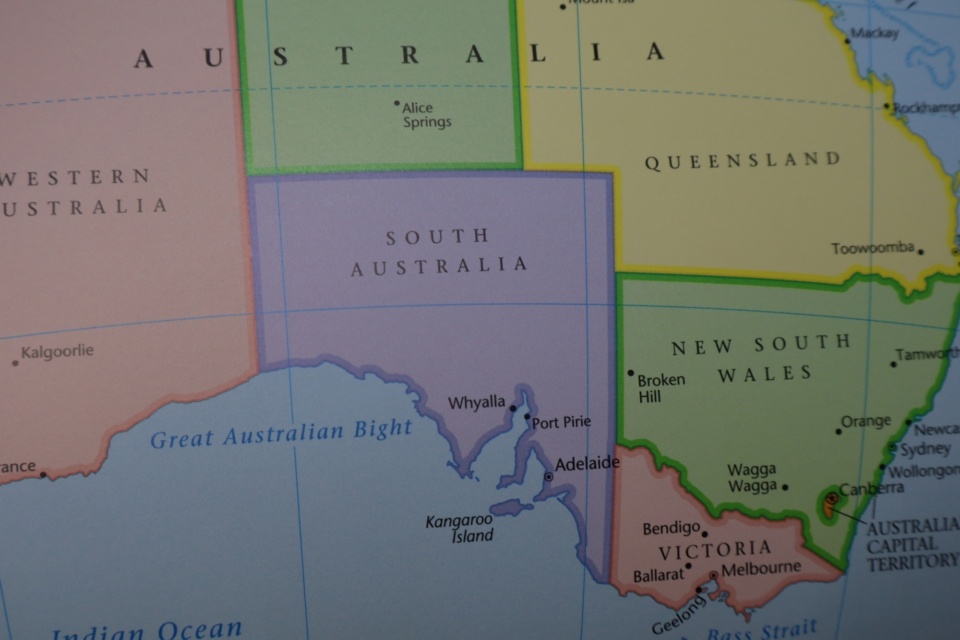
For community groups, federation is an eight-part headache
Posted on 03 Dec 2025
If you wanted an example of the problems inherent in federal systems, you couldn’t do better than…
Posted on 05 Sep 2023
By Denis Moriarty, group managing director, Our Community

Australia's first national wellbeing framework Measuring What Matters is a welcome development, but trying to estimate non-economic factors using the rigid numerical frameworks we’ve developed for economic measures will be tricky, says group managing director Our Community, Denis Moriarty.
The federal government has heeded the complaints of doctors, sociologists and philosophers and is moving away from purely economic measures of social progress.
Specifically, Treasury has developed Measuring What Matters – “Australia’s first national wellbeing framework that will track our progress towards a more healthy, secure, sustainable, cohesive and prosperous Australia.”
I think this is a wonderful idea, and long overdue.
Andrew Leigh, our charities minister, deputy treasurer and data nerd, has been its champion and he deserves credit. We should value these benefits, and it’s very hard to improve them systematically if you don’t try to measure your starting and finishing points.
My only reservation is that if you’re estimating non-economic goods you can’t really cram them into the rigid numerical frameworks we’ve developed for economic measures. They’re about us, and we’re complicated.
Take, for example, “Overall life satisfaction” – “a summary measure of subjective wellbeing, reflecting how satisfied people are feeling with their lives in general”.
There’s a lot that can be said about that, but it will never be possible to simply shove a Star Trek-style tricorder against your temple and read off that figure (7.2 out of 10 in 2020, if you were wondering, down slightly – COVID? – from 7.5 in 2019, according to the Australian Institute of Health and Welfare). It’s more the vibe. It’s a tool for understanding, not a term in an equation.
That inescapable vagueness at the core of the framework makes it all the more important for it to have a handle on the part of our lives and hopes and aspirations we can measure in concrete terms.
One of the most significant of these is life expectancy, which quite effectively sums up quite a lot about what’s working in national improvement terms and what isn’t. And it’s here, regrettably, that I have to take sharp exception to what Measuring What Matters is saying.
We’re doing pretty well on life expectancy, as 21st century nations go. The framework states, “A boy born between 2019‑21 can expect to live to 81.3, while a girl can expect to live to 85.4 years. This is equal 4th highest life expectancy at birth in the world, as ranked by the OECD.”
Fair enough. But the framework also says, “As a measurement, life expectancy at birth captures the average number of years a new born can expect to live…“. No. It doesn’t. Flatly not.
That life expectancy number isn’t a prophecy about your new born baby. All that figure means is that half the men born 81.3 years ago are dead. It’s a purely retrospective measure of how many Australians died over the past century or so and the age they died at.
Just to underline that point, let’s go back 81 years, taking us to 1942.
The average boy born in that year – let’s call him Alexander – had, according to the 1942 actuarial tables, a life expectancy of 64.9 years, taking him to 2007. Was his son Buddy putting flowers on Alexander’s coffin in 2007?
No, Alexander was busy paying off his tiny mortgage and lining up his retirement in a beach cottage on the south coast. The odds on Alex being dead didn’t swing into positive until this year, because life expectancy has gone up between 1942 and now by about 16½ years – 2½ months a year, every year.
That’s quite a lot. I think it’s one of the most significant facts about us, and it’s one that almost nobody in Australia realises.
"That inescapable vagueness at the core of the framework makes it all the more important for it to have a handle on the part of our lives and hopes and aspirations we can measure in concrete terms."
The problem is that there are two calculations of life expectancy, and they measure different things.
When we say that male life expectancy in 2023 is 81.3 years we’re talking about period life expectancy, which is based entirely on what’s happened in the past. It’s based on the assumption that current rates of death at each age will continue indefinitely into the future – an assumption that has been proven wrong in quite literally every census in the past 120 years.
If, on the other hand, we want to speculate on what Alex’s great-grandchild Sparkles is actually going to experience, we want cohort life expectancy, which takes into consideration the changes in rates of mortality that are expected to occur in the future. For the past three centuries, at least, cohort life expectancy has been considerably higher than period life expectancy.
If life expectancy continues to rise at current rates, the life expectancy for a boy born today isn’t 81.3, it’s 102.6.

This rate of improvement may or may not continue, given the possibility of more global pandemics, the certainty of global warming, and the possibility of upper limits on human ageing, but that’s why we need to do the hard analytical work (and educated guesswork) that productive prediction involves. Measuring What Matters is giving us period life expectancy and telling us it’s cohort life expectancy.
All this is pretty technical, of course, so why am I making such a fuss about it?
Partly because in promising today’s children an 81-year lifespan the government is setting itself a remarkably easy target. Partly because I think we need to encourage long time horizons among the young – if you think you’re going to be in residence for a century, you might not be so reluctant to pay for essential maintenance.
And largely because it illustrates the pervasive tendency in Australian planning to prefer certainty over understanding. Pointing at yesterday’s statistics is risk-free, whereas estimating tomorrow’s developments may leave you open to criticism.
Practically all Australia’s planning – town planning, energy planning, educational planning, inequality planning, you name it – is based on a similar assumption that current rates of whatever it is we’re tracking will continue indefinitely into the future, which is the one thing we can be absolutely sure won’t happen.
We make these assumptions because our governments are too cautious to speculate and too scared to take responsibility for change.
In an era where change is absolutely necessary, stasis isn’t an option and ought not to be an assumption.
Denis Moriarty is group managing director of OurCommunity.com.au, a social enterprise helping the country's 600,000 not-for-profits.

Posted on 03 Dec 2025
If you wanted an example of the problems inherent in federal systems, you couldn’t do better than…

Posted on 19 Nov 2025
When it comes to loyalty to car brands, it can be confusing who we should support, and, even more…

Posted on 05 Nov 2025
Before the Prime Minister gets too excited about his recent meeting with the American President, he…

Posted on 14 Oct 2025
The idea of "long term" is not something that sits well in the social media era, yet governments…

Posted on 30 Sep 2025
I am proud of what Our Community, and its exceptional team, have achieved in the past 25 years. As…

Posted on 16 Sep 2025
Happy Australian Citizenship Day! To mark the occasion, Our Community leader Denis Moriarty takes…

Posted on 02 Sep 2025
Words live, evolve, and sometimes die. Some words are invented from scratch, some are old words…

Posted on 26 Aug 2025
The cost of the National Disability Insurance Scheme (NDIS) is climbing relentlessly – $44 billion…

Posted on 04 Aug 2025
The new leader of the Liberal Party, Sussan Ley, wants to increase the proportion of women…

Posted on 08 Jul 2025
The United States wants Australia to spend more on its armed forces. That’s the way nations talk…

Posted on 26 May 2025
When it comes to citizenship, Australians want to have their cake and eat it too, writes group…

Posted on 19 May 2025
The lack of judicial partisanship in Australia compared to the United States is something to be…